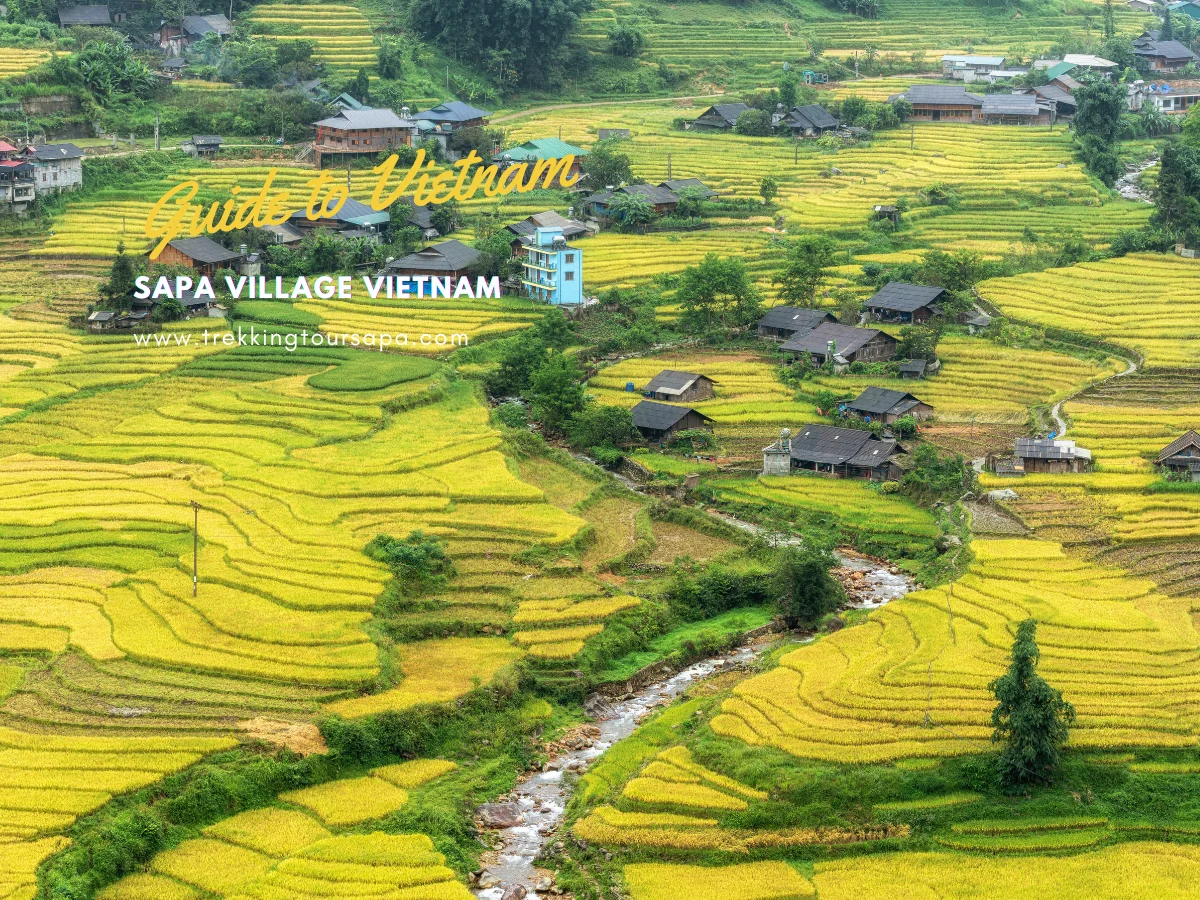Welcome to Sapa Village Vietnam, a place of breathtaking beauty. It’s in the enchanting highlands of northern Vietnam. The town is in the Hoàng Liên Son mountain range, about 350 kilometers from Hanoi. It sits at 1,500 meters above sea level.
Sapa is known for its stunning views, diverse culture, and exciting treks. It invites us to discover its hidden wonders.
In this guide, we explore what makes Sapa special. We’ll look at its vibrant ethnic communities and the famous terraced rice fields in the Muong Hoa Valley. Join us as we uncover the beauty, culture, and experiences waiting for us in this amazing place.
Key Takeaways
- Sapa is a stunning highland town located in Lào Cai Province.
- The best times to visit are September to November and March to May.
- Sapa is home to diverse ethnic minorities including the H’mong and Dao communities.
- Various trekking routes cater to adventurers of all skill levels.
- Accommodation options range from luxurious resorts to authentic homestays.
- Don’t miss the vibrant Bac Ha Market on Sundays for a taste of local culture.
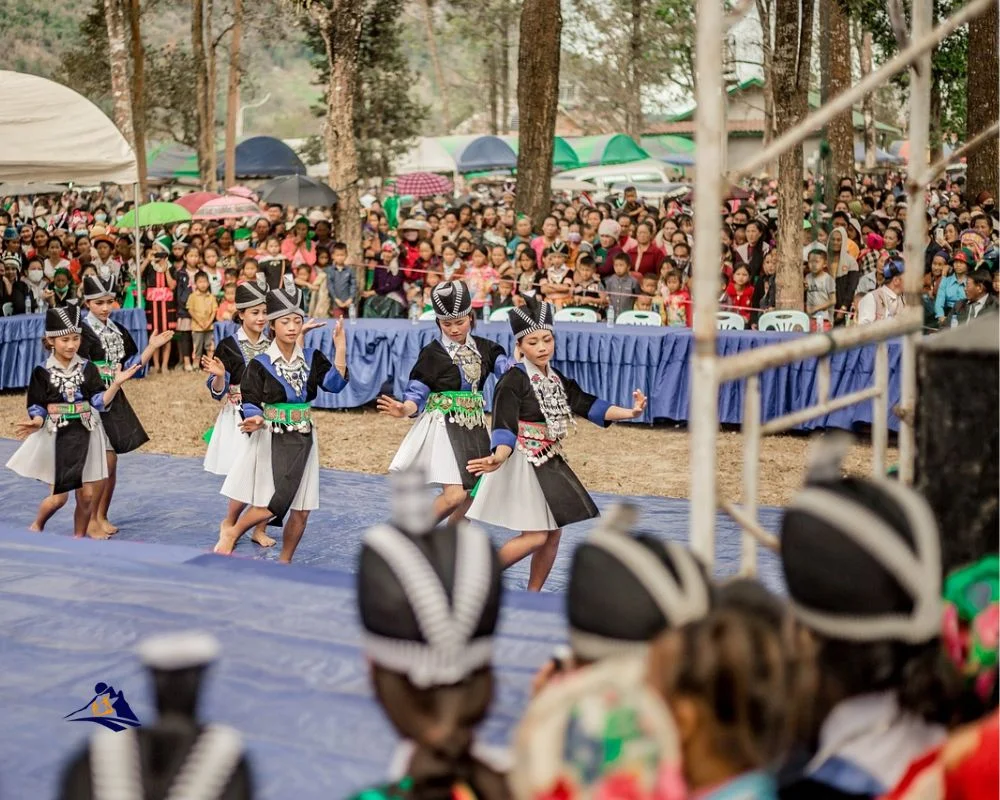
Table of Contents
ToggleOverview of Sapa
Sapa is a charming town in northern Vietnam’s highlands. It invites visitors with its stunning landscapes and rich culture. This place is famous for cultural journeys and northern Vietnam adventures. It’s surrounded by lush valleys and misty mountains, with rice terraces as far as the eye can see.
Exploring Sapa offers many activities to enhance our experience. We can go trekking through beautiful scenery or dive into local culture. Outdoor lovers can climb Fansipan Mountain, Vietnam’s highest peak, by cable car or a multi-day trek.
For a deeper look at Sapa, check out a detailed Sapa overview. It has travel tips, top attractions, and stories that make Sapa come alive. Whether we’re exploring valleys or trying local food, Sapa has lots to discover.
Spending 3 to 5 days in Sapa lets us fully enjoy its beauty. Its humid subtropical climate keeps it cool all year. Every visit to Sapa offers unforgettable experiences and deep cultural insights.
Geography and Location
Sapa is about 350 kilometers (217 miles) northwest of Hanoi, Vietnam’s capital. It’s a remote and stunning Sapa location in the northern highlands. The town is at 1,500 meters (4,921 feet) high, offering amazing views and a unique setting.
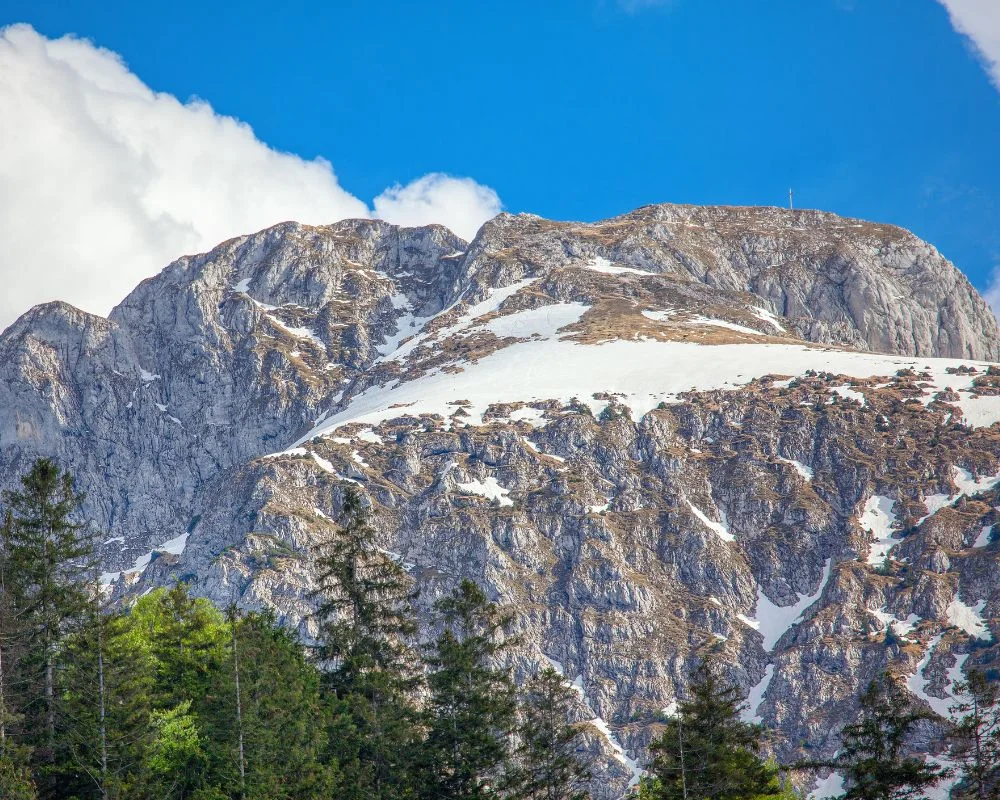
The rugged terrains and majestic peaks of the Hoàng Liên Son mountains make Sapa special. Fansipan, the highest mountain in Vietnam, is part of this range. It shows the area’s high elevation.
Sapa’s geography is also known for its cascading terraced rice fields. These green fields are vital for local farming. They add to the area’s beauty and are key to the local economy. The irrigation systems show a deep understanding of the geography of Sapa.
The region is full of natural beauty, with waterfalls like Silver Waterfall and Love Waterfall. These formations make Sapa a top spot for tourists. They want to see the lush landscapes and rich culture. Here, nature and culture blend perfectly, thanks to the diverse ethnic communities.
Sapa’s close location to China adds to its cultural richness. It offers a unique mix of traditions and markets. Visitors can enjoy the lively atmosphere, making Sapa a key destination for exploring northern Vietnam. For more on trekking adventures, check out this guide.
Weather and Best Time to Visit
Planning a trip to Sapa means knowing the weather. This place has a temperate climate with four seasons. The best times to visit are from March to May or September to November. These months offer mild weather and clear skies.
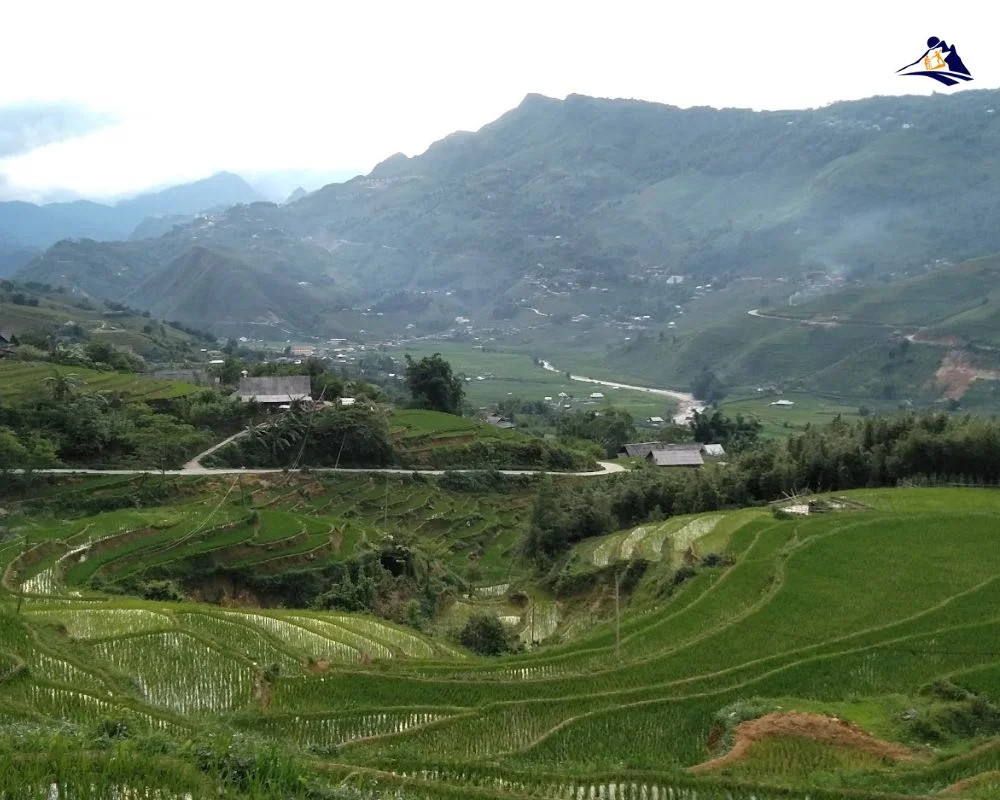
Spring, from March to May, has temperatures between 10°C and 20°C. It’s great for trekking through colorful flowers. Autumn, from September to November, has temperatures between 15°C and 20°C. It’s perfect for seeing the golden rice terraces.
Winter is different. From December to February, it can get as cold as 0°C. Snowfall adds charm to Sapa’s climate. It’s cooler, but it’s peaceful.
The harvest season, from mid-September to early October, is special. The terraced fields turn golden, perfect for walks and photos. The watering season, from April to May, is also beautiful. The rice fields fill with water, creating stunning reflections.
Sapa welcomes visitors all year with different weather and activities. Whether you love spring, autumn, or winter, there’s magic here. For more travel tips, check out the journey from Ho Chi Minh City to Sapa.
Cultural Diversity of Sapa Village Vietnam
Sapa is a unique place, known for its rich cultural diversity. It’s home to many hill tribes, like the H’mong, Dao, Tay, and Giay. Each group adds to our understanding of Vietnam’s culture.
The H’mong community is famous for its female trail guides. They wear colorful clothes and share their traditions with visitors. The Dao people are known for their knowledge of traditional medicine, playing a key role in the community.
Sapa is one of Vietnam’s most diverse places. We can visit the Tay people’s villages in Ban Ho and Thanh Phu. There, we learn about their traditions and daily life.

The Giay ethnic group adds to Sapa’s cultural richness, even though they are fewer in number. They speak many languages, including H’mong, Dao, Vietnamese, and English. This shows their adaptability and openness.
Local markets like Bac Ha offer a glimpse into the world of various ethnic groups. Here, we see the differences and similarities that make Sapa special. It’s a truly enriching experience.
Getting to Sapa
Traveling to Sapa is an adventure in itself. Knowing our options for reaching this picturesque destination makes the journey better. We can choose between an overnight train or a comfortable bus ride, each offering a unique experience.
The overnight train from Hanoi to Lào Cai takes about eight hours. It boasts stunning views of the countryside. Many travelers favor this choice.
Once we arrive in Lào Cai, getting to Sapa from Hanoi continues with a scenic drive. This drive of approximately 38 kilometers offers breathtaking views. Alternatively, several bus companies provide sleeper buses for our comfort during the trip.
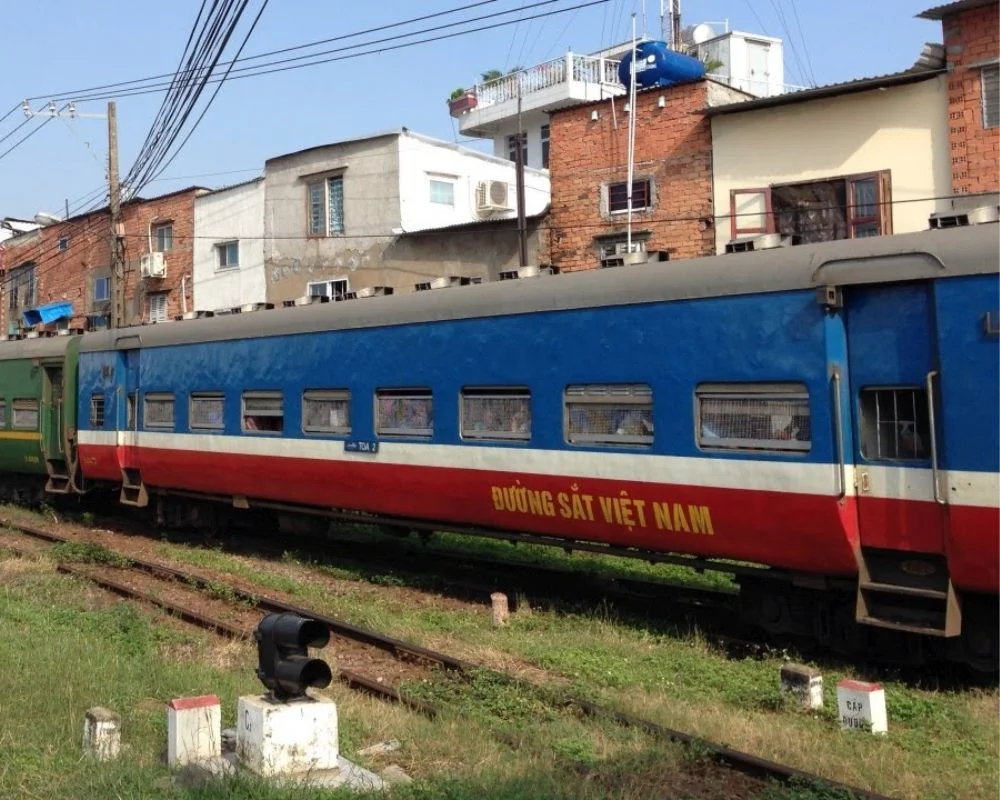
Here’s a quick comparison of our transport options:
| Transport Type | Duration | Comfort Level | Cost (Approx.) |
|---|---|---|---|
| Train to Lào Cai | 8 hours | Moderate | USD 30-50 |
| Bus (Sleeper) | 5-6 hours | High | USD 20-30 |
Our choice of Sapa transportation is key to the travel to Sapa. Whichever method we select, we are bound to enjoy the stunning vistas leading us to the highlands. From the moment we set off, excitement fills the air, knowing that the beauty of Sapa awaits us.
Sapa Transportation Options
When we arrive in Sapa, we find many ways to travel. Walking or cycling lets us see the beauty around us at our own speed. It’s a great way to really experience the area.
Renting a motorbike adds excitement to our trip. Prices are from VND 120,000 to 200,000 per day. This lets us explore Sapa’s roads and find special places.

For longer trips, we can use motorcycle taxis or regular taxis. Shuttle buses also take us to nearby sights. These options help us make the most of our time in Sapa.
Getting to Sapa from Hanoi can be by bus or train. Bus tickets cost between VND 210,000 and 750,000. Train tickets are VND 450,000 to 2,000,000, depending on the class. The trip takes 5 to 9 hours, then a short ride to Sapa.
Traveling in Sapa is more than just getting from one place to another. It’s about seeing beautiful views and experiencing local culture. Using local transport lets us truly feel Sapa’s spirit and enjoy the scenery.
Sapa Accommodations
Choosing the right place to stay in Sapa is key to a great trip. The town has many options, from luxury resorts to cozy homestays. We can find something that fits our taste and budget.
In Sapa, there are many Sapa hotels to choose from. For a special stay, try the French Haute-inspired Hotel de la Coupole – MGallery. Or, enjoy a local homestay for a cozy feel. Places like Sapa Mountain Queen House are perfect for couples, while Surelee homestay offers a real cultural taste.
Here’s a quick overview of some of the best places to stay in Sapa categorized by budget:
| Accommodation Type | Price per Night | Location |
|---|---|---|
| Sapa Garden | $20 | Near Sapa Town Center |
| Surelee Homestay | $3 | Ham Rong area |
| Charm Hill Sapa Hotel | $20 | Hamon Rong area |
| Hmong Sister House | $8 | Village proximity |
| Pea Homestay | $3 | Charming Riverside location |
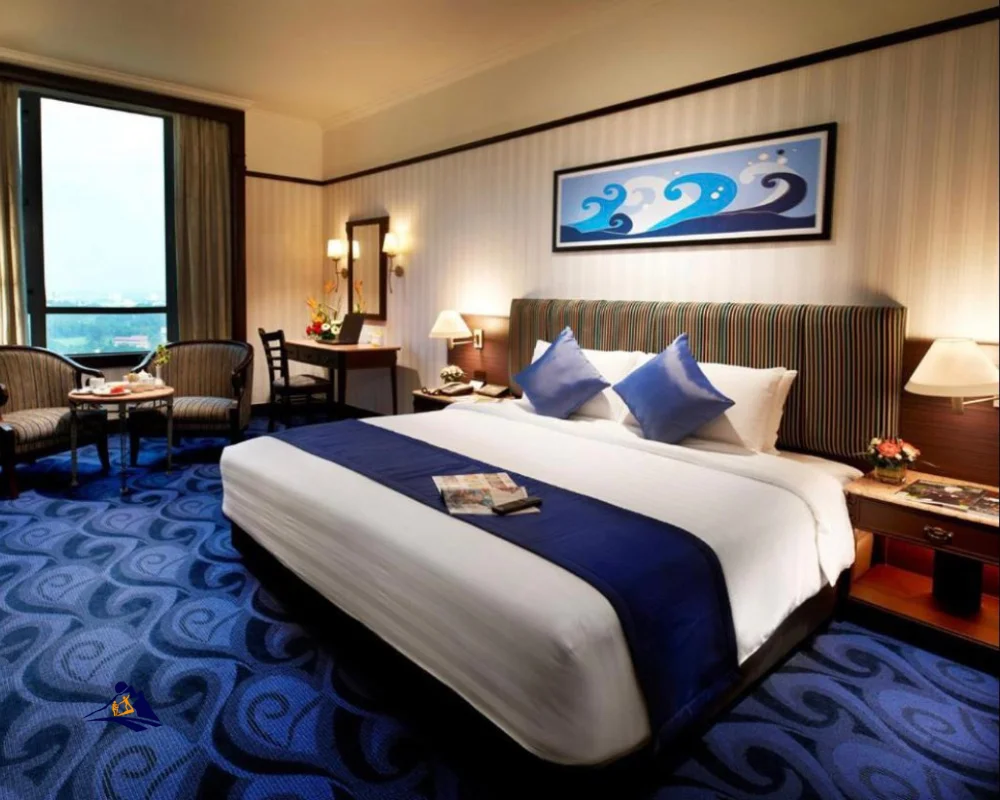
Sapa’s places to stay are generally safe, making it easy to explore. Staying for three to four days is recommended. But, we can stay up to a week to fully enjoy the views and culture. Exploring Sapa homestays adds a unique touch to our journey.
To learn more about Sapa’s accommodations and experiences, check out this resource.
Top Sapa Attractions
When we think of Sapa attractions, several must-see places in Sapa come to mind. This picturesque region offers breathtaking landscapes and memorable cultural experiences. Here are some top spots we shouldn’t miss during our visit.
Muong Hoa Valley and Terraced Fields
Muong Hoa Valley showcases stunning terraced rice fields, a hallmark of Sapa’s agricultural heritage. Walking through this national heritage site lets us appreciate the ingenuity of local farmers. We also see their dedication to cultivating rice in this breathtaking environment.
We can engage in Sapa trekking tours here. These tours offer magnificent views while teaching us about traditional farming practices.

Fansipan Mountain
Fansipan Mountain is the highest peak in Vietnam, standing at 3,147.3 meters. It’s an unmissable destination when exploring Sapa. We can either hike this challenging route or take the world’s longest three-rope cable car.
The cable car offers panoramic views of the Hoang Lien Son Range and the lush Muong Hoa Valley below. The roundtrip cable car fare is approximately VND 800,000. It’s an investment for the breathtaking vistas awaiting us.
Ethnic Villages and Culture
Exploring Sapa’s ethnic villages like Cat Cat and Lao Chai lets us immerse ourselves in the area’s rich cultural tapestry. These villages offer insight into local traditions and handicrafts. They also provide an array of culinary delights that reflect Sapa’s diverse communities.
As we wander through the villages, purchasing handmade textiles and trinkets supports local families. It helps preserve their heritage.
Sapa Trekking Tours: An Adventurer’s Paradise
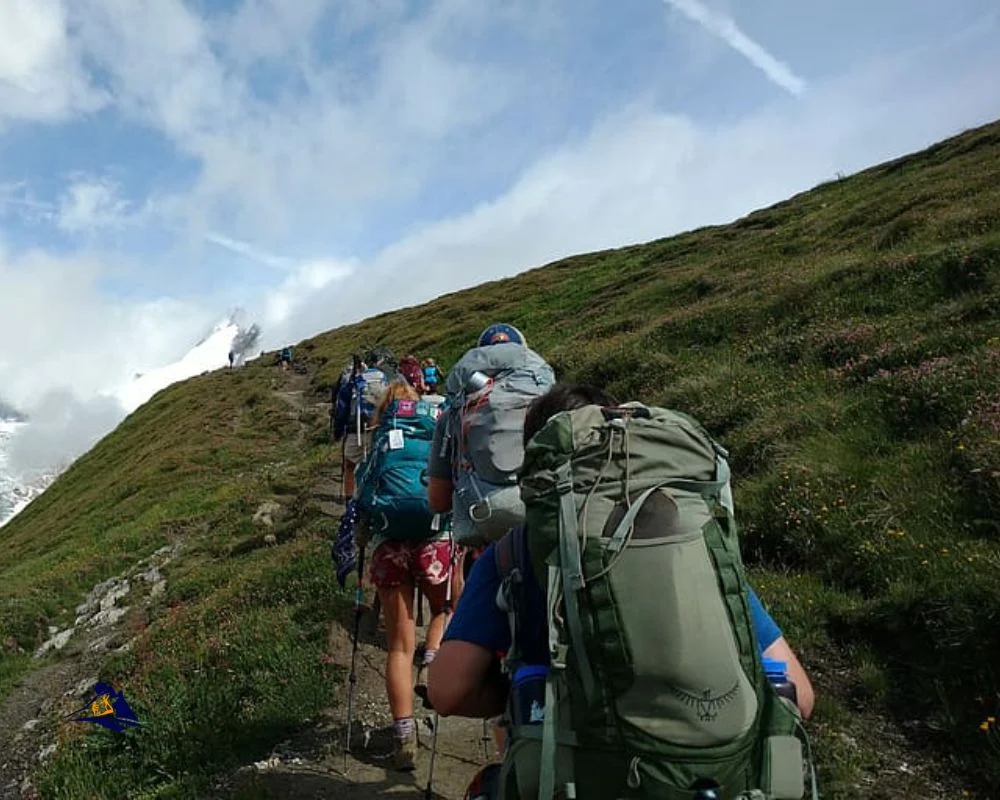
Exploring Sapa trekking tours is like stepping into an adventurer’s dream. Located in the Lào Cai province, Sapa is a haven for hikers of all levels. Its stunning landscapes and hidden valleys make every journey an unforgettable adventure.
The best time for hiking in Sapa is from spring to autumn. Spring brings warmth and wildflowers, while autumn offers cool weather and golden rice fields. Summer can be hot and humid, and winter is chilly.
For a great experience, plan to trek for at least two to three days. In two days, we can visit charming villages, climb Mount Fansipan, and stay with a local family. Spending three days lets us explore more remote villages, like Bản Khoang and Tả Giàng Phình.
On our treks, we meet local tribes and learn about their traditions. We also see waterfalls and markets filled with handicrafts and food. Remember to pack the right clothes, a good backpack, and a first aid kit. Having a local guide can make our journey even more special.
- Cat Cat Village Trekking Tour
- O Quy Ho Pass Trekking Tour
- Muong Hoa Valley Trekking Tour
- Ham Rong Mountain Trekking Tour
- Fansipan Trekking Tour
Every trail in Sapa offers breathtaking views. It’s not just about hiking in Sapa. It’s about connecting with nature and culture, making every step memorable.
| Tour Duration | Highlights | Recommended Villages |
|---|---|---|
| 2 Days | Explore Ta Van and Ban Ho, Climb Fansipan | Ta Van, Ban Ho |
| 3 Days | Visit Bản Khoang and Tả Giàng Phình | Bản Khoang, Tả Giàng Phình |
Sapa Cuisine: A Taste of the Highlands
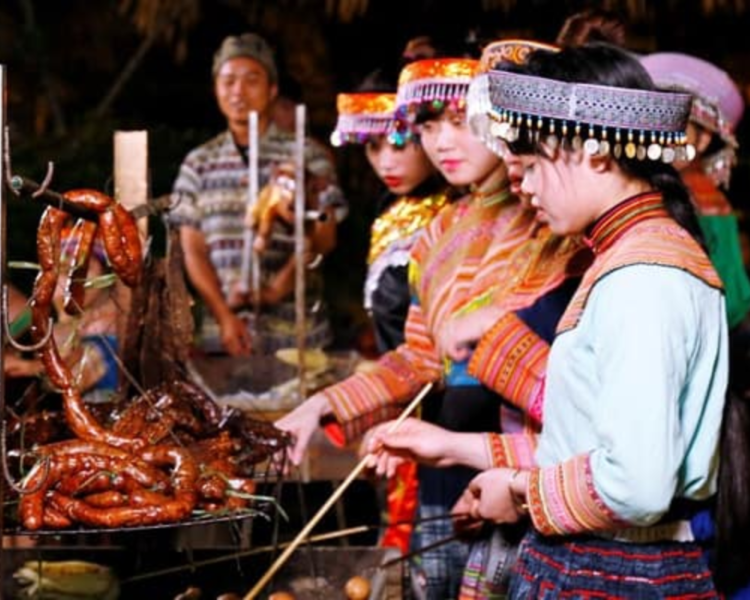
Exploring Sapa food is an adventure in itself. It’s known for its rich flavors and unique ingredients. At the heart of traditional Sapa cuisine are dishes that tell the story of the region’s culture and resources.
Thang Co, a horse meat and offal soup, is a highlight. It’s made with around 12 spices that add to its depth of flavor. This dish is a true taste of the H’Mong tradition.
Walking through local restaurants or homestays, we can’t help but try grilled salmon. It’s a staple on almost every menu. The beauty of Sapa dining is that it highlights the best of local produce.
Free-range pigs are expertly turned into various delicious dishes. This showcases the region’s culinary creativity.
The bamboo sticky rice is a testament to the techniques passed down through generations. Traditional dishes like black chicken and dried buffalo meat reflect the Hmong people’s culinary practices. Each bite is a celebration of local flavors.
We also enjoy the seven-color sticky rice. It’s a feast for the eyes and the palate. The natural ingredients used in it show Sapa’s culinary creativity.
For those looking for a unique drink, Shan Lùng wine is a must-try. It’s made from glutinous rice and medicinal herbs. It pairs beautifully with meals.
Local delicacies like Lau Ca Tam (salmon hotpot) and Xoi Ngu Sac (5-colored sticky rice) capture the essence of Sapa. Every meal is a representation of the region’s culture. It combines flavors, traditions, and communal dining experiences that we cherish. With Sapa food at the heart of our adventures, we connect deeply with this enchanting landscape.
Sapa Landscapes: Nature’s Masterpiece

The breathtaking Sapa landscapes are a true marvel. They are nestled among towering mountains and lush valleys. The natural beauty of Sapa is captivating for all who visit.
The terraced rice fields here are among the world’s most beautiful. Each season brings its own charm, offering spectacular photography opportunities.
Exploring places like Muong Hoa Valley and Cat Cat village reveals stunning terraces. Visiting in mid-September to early October lets us see the fields in their golden glory. This is a sight that makes the experience truly remarkable.
For photography lovers, Sapa has many great spots. The Fansipan cable car and O Quy Ho Pass are perfect for capturing the beauty. Trekking and photography tours let us capture Sapa’s essence.
We should wear comfortable shoes and dress for the weather. This ensures a pleasant experience while exploring. Renting traditional ethnic costumes adds a unique touch to photos.
This local engagement deepens our appreciation for Sapa’s culture and natural beauty. Every moment here reveals a new facet of Sapa’s mesmerizing landscapes.
Cultural Experiences in Sapa
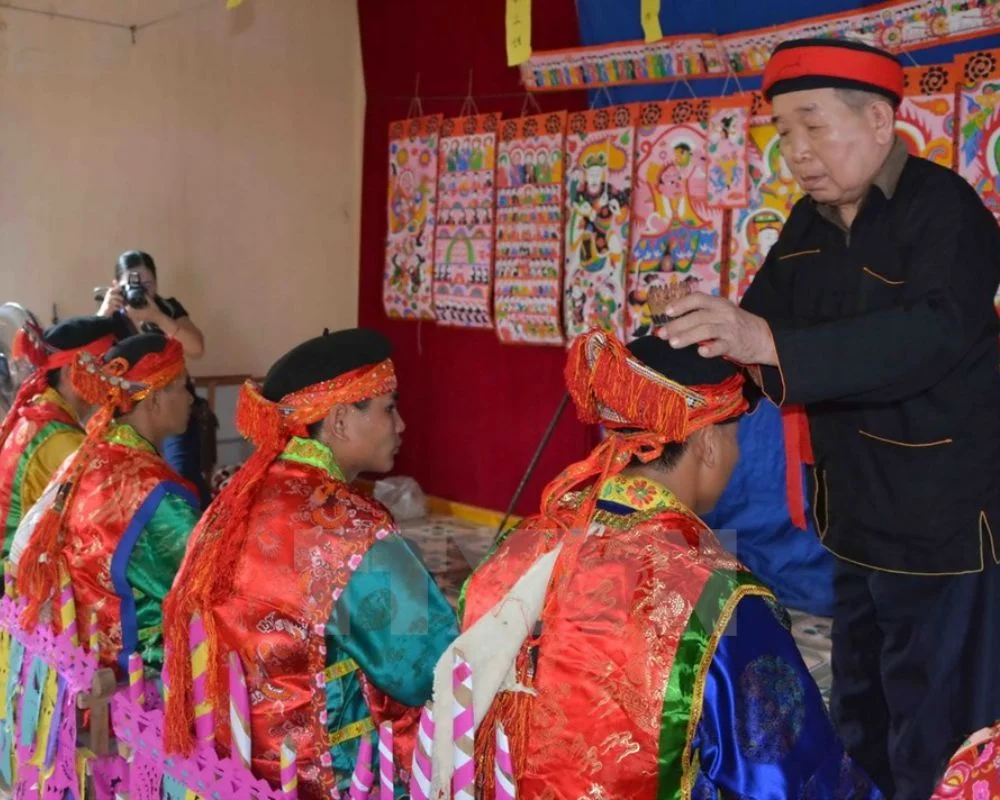
Exploring the Sapa culture lets us dive into local traditions and customs. We get to meet ethnic communities and see their daily lives up close.
By taking part in traditional activities, we learn about their ways of life. We share meals made from local ingredients and join in on festivals like the Gau Tao Festival. This festival celebrates the new year for the Mong people.
Local festivals in Sapa are full of life and color. People come to enjoy music and dance with the community. We can also see the Xa Pho ethnic group’s village sweeping ritual during their lunar new year.
For a deeper experience, try staying in a homestay. Living with local families, we learn about their daily lives and traditions. We share stories and meals together.
| Activity | Description | Community |
|---|---|---|
| Gau Tao Festival | Celebration of New Year with traditional customs, music, and dance. | Mong ethnic group |
| Village Sweeping Ritual | A lunar new year tradition focused on purification and renewal. | Xa Pho ethnic group |
| Homestay Experience | Live with local families, participate in daily activities, and enjoy local cuisine. | Various ethnic communities |
Our trip to Sapa is not just about beautiful landscapes. It’s also about connecting with diverse cultures. Every moment we spend here enriches our understanding of this magical place. We leave with memories and a deeper love for its heritage.
Sapa Travel Tips for an Unforgettable Journey

Going to Sapa needs some careful Sapa travel tips to make the most of this beautiful highland. One key tip is to wear layers. Sapa’s weather can shift a lot, so being ready for both warm days and cool nights is key.
For packing for Sapa, remember a light, waterproof jacket for sudden rains. Also, sturdy hiking shoes with good ankle support are a must for the slippery paths. Making a travel checklist early helps us not forget anything important.
Respecting local customs is vital in Sapa. Being mindful and respectful when buying local crafts is important. Supporting local artisans not only adds to our trip but also helps the local economy.
Here are some quick tips for Sapa planning:
- Travel during the best times: mid-February to May and September to November for great weather.
- Plan to stay at least 2-3 days to see places like Fansipan Mountain and ethnic villages.
- Use local buses, taxis, or rental motorbikes to move around easily.
By using these Sapa travel tips and planning well, we set up for an amazing and unforgettable trip in this magical place.
Conclusion
Our journey through Sapa highlands has ended, but the memories stay with us. We’ve seen the beauty of Sapa, nestled at the foot of Fansipan, Vietnam’s highest mountain. Sapa Village offers us a chance to explore stunning landscapes and vibrant cultures.
The lush fields, colorful markets, and the warmth of the Hmong and Red Dao people show us Sapa’s true spirit. We’ve trekked through valleys, seen the Silver Waterfall, and tasted local foods. Each experience has added to the charm of this place.
Thinking about returning to Sapa Village, we remember the unforgettable moments. We appreciate the cultural diversity and natural wonders of this special region. Sapa’s magic has left an indelible mark on our hearts.
Sapa 1 Day Tours
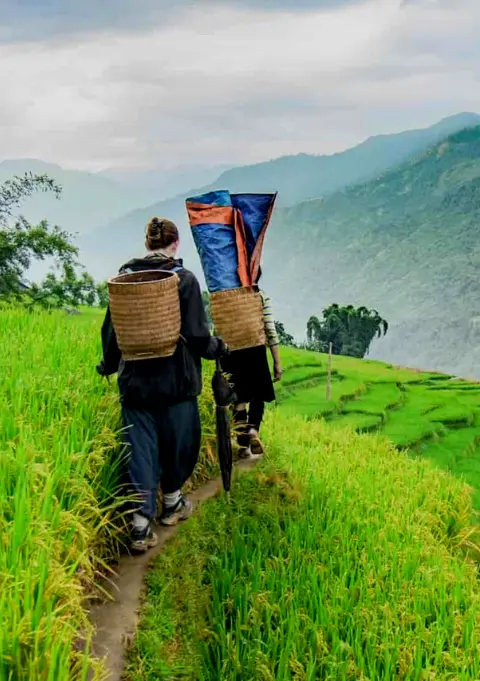
- 1 day experience
- Moderate to challenging
- Cultural immersion & active adventure
- Rice fields, valleys & villages
- Private tours
- Vegan-friendly
Sapa 2 Day Tours
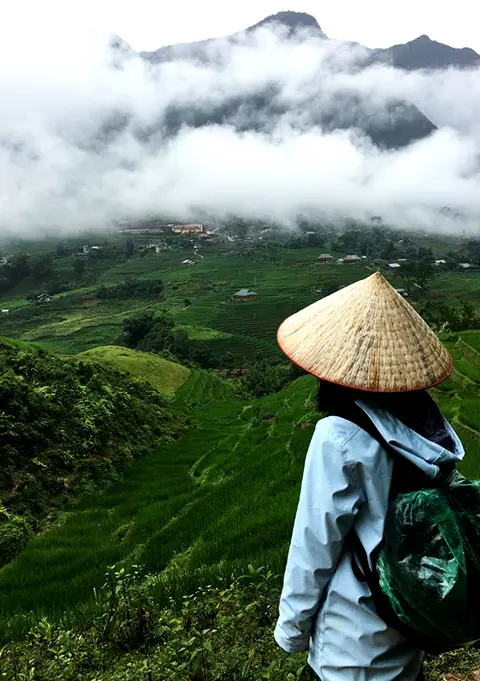
- 2 days 1 night experience
- Moderate to challenging
- Cultural immersion & active adventure
- Mountains, valleys, rice fields and villages
- Private tours
- Vegan-friendly
Sapa 3 Day Tours
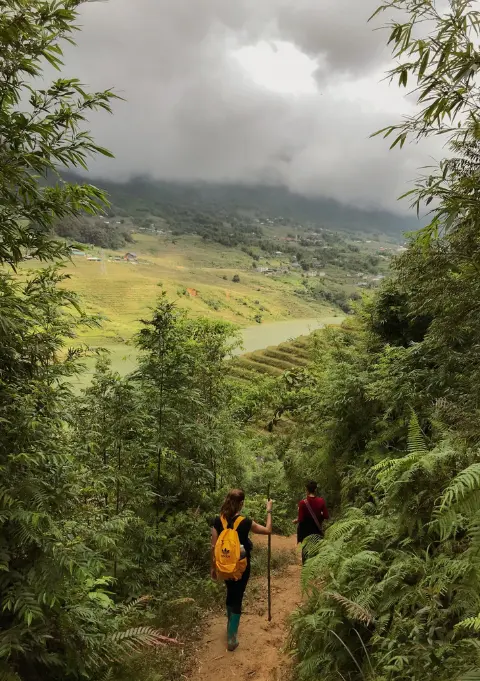
- 3 days 2 night experience
- Moderate to challenging
- Cultural immersion & active adventure
- Mountains, valley, rice fields & villages
- Private tours
- Vegan-friendly
Sapa 4 Day Tours
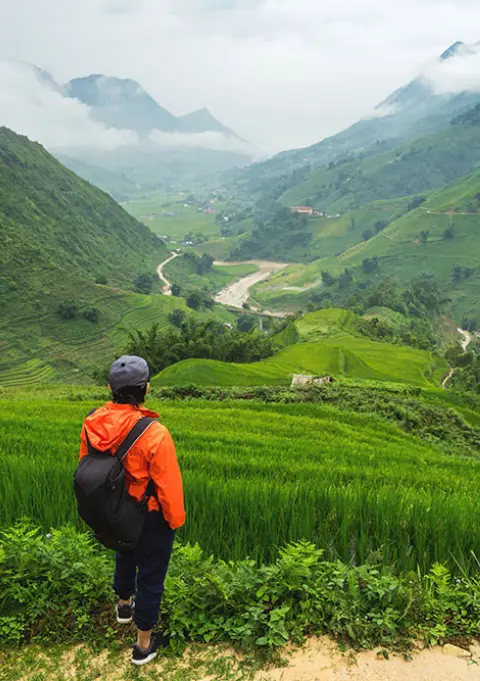
- 4 days 3 night experience
- Moderate to challenging
- Cultural immersion & active adventure
- Mountains, valleys, rice fields & villages
- Private tours – Less Touristic
- Vegan-friendly
